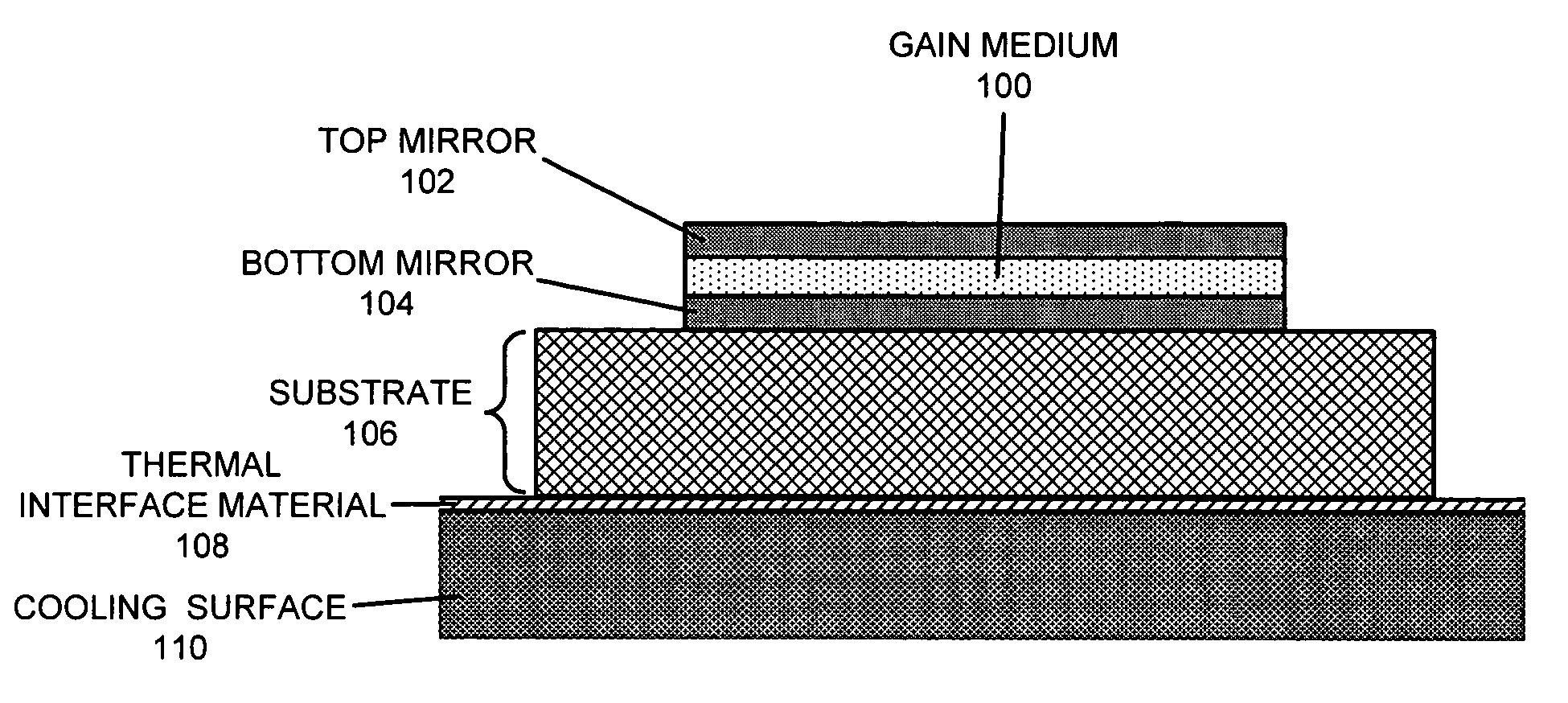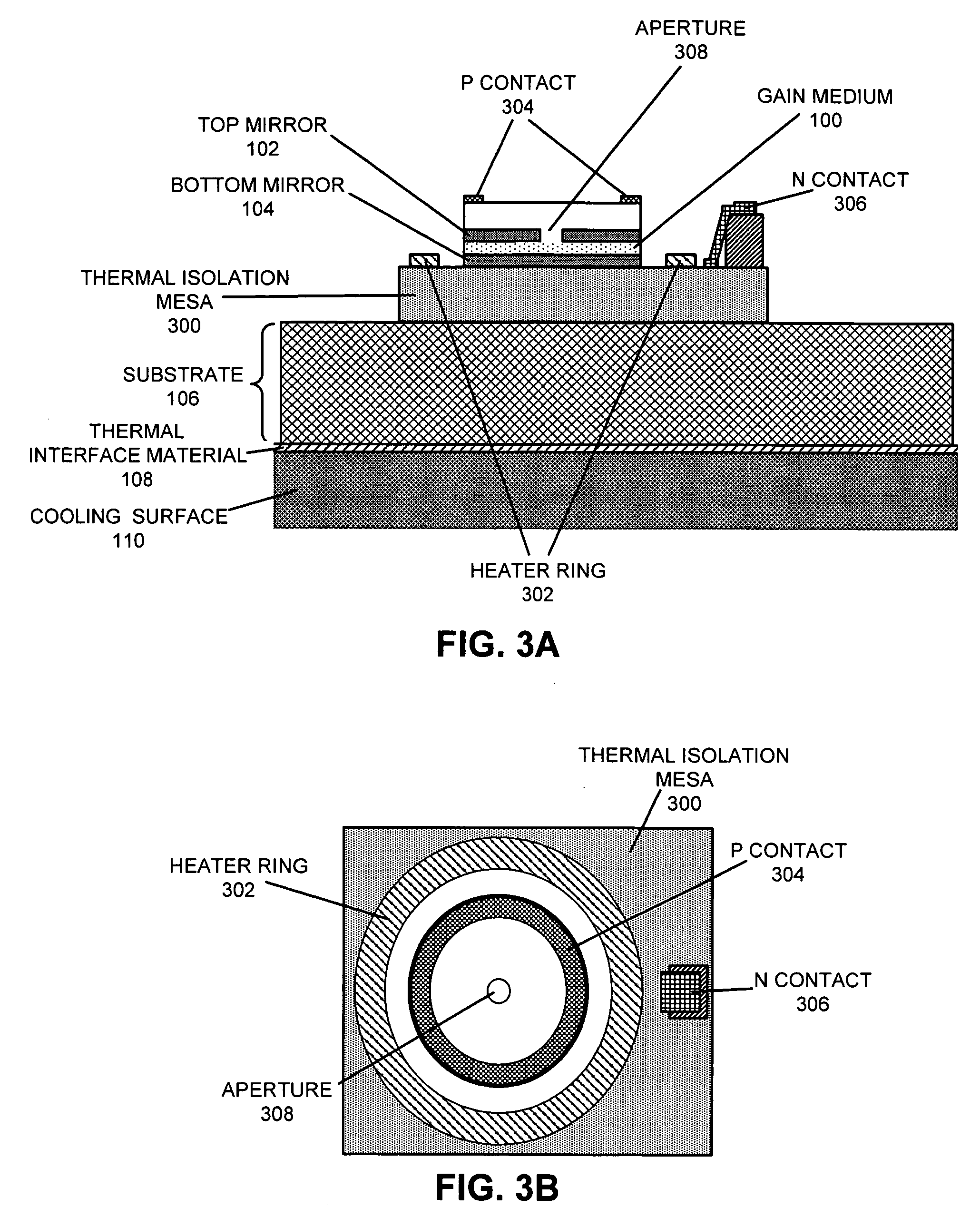Structures and methods for adjusting the wavelengths of lasers via temperature control
a technology of laser wavelength and temperature control, which is applied in the direction of semiconductor lasers, optical elements, instruments, etc., can solve the problems of second bandwidth density bottleneck in optical interface, difficult manufacturing process, and high cost of integrating a set of precisely-tuned laser wavelengths into a package solution for dense wdm, so as to facilitate the adjustment of laser wavelengths
- Summary
- Abstract
- Description
- Claims
- Application Information
AI Technical Summary
Benefits of technology
Problems solved by technology
Method used
Image
Examples
Embodiment Construction
[0025]The following description is presented to enable any person skilled in the art to make and use the invention, and is provided in the context of a particular application and its requirements. Various modifications to the disclosed embodiments will be readily apparent to those skilled in the art, and the general principles defined herein may be applied to other embodiments and applications without departing from the spirit and scope of the present invention. Thus, the present invention is not limited to the embodiments shown, but is to be accorded the widest scope consistent with the claims.
Optical Networking and Wave-Division Multiplexing
[0026]Parallel optical communication is becoming increasingly common in board-to-board, rack-to-rack, and box-to-box interconnect applications. For example, in one sample application, optical transceivers provide an aggregate capacity of 10-40 Gigabits per second, with each transceiver providing one, four, or twelve channels arranged in one-dim...
PUM
 Login to View More
Login to View More Abstract
Description
Claims
Application Information
 Login to View More
Login to View More - R&D
- Intellectual Property
- Life Sciences
- Materials
- Tech Scout
- Unparalleled Data Quality
- Higher Quality Content
- 60% Fewer Hallucinations
Browse by: Latest US Patents, China's latest patents, Technical Efficacy Thesaurus, Application Domain, Technology Topic, Popular Technical Reports.
© 2025 PatSnap. All rights reserved.Legal|Privacy policy|Modern Slavery Act Transparency Statement|Sitemap|About US| Contact US: help@patsnap.com



